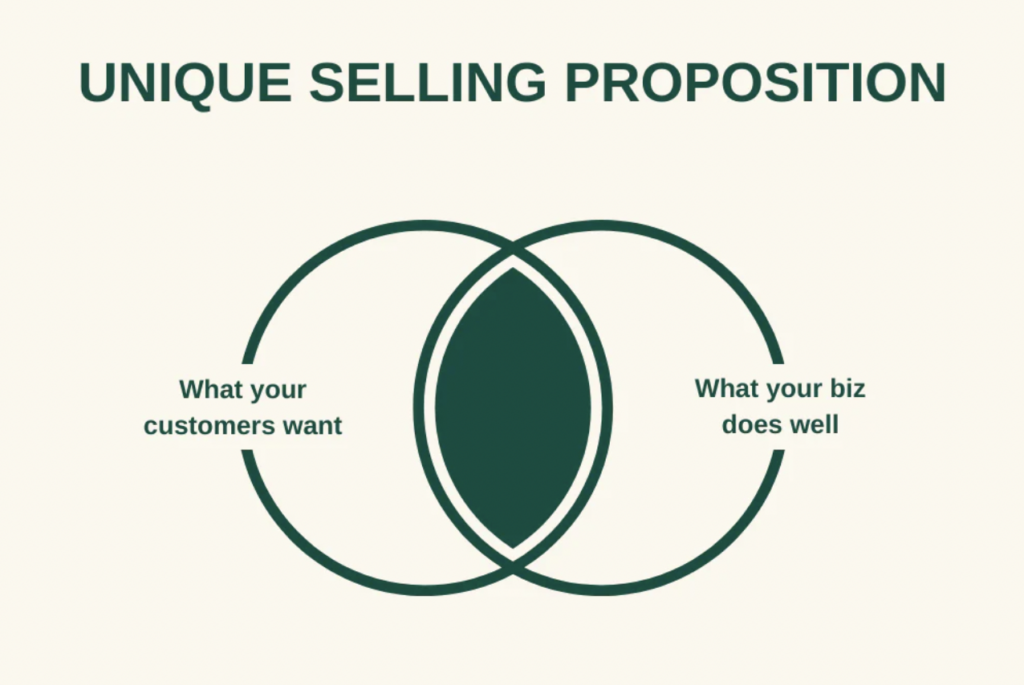Recently we have talked with a lot of attorneys who are very concerned about the methods and tactics and less about the message they’re trying to send. It’s similar to what we see from a lot of other agencies. Starting with a tactic before having a strategy.
It’s all too easy to be drawn towards the latest, dazzling trends – “Should we start with TikTok Ads? What about LSA’s or Google Ads? What about SEO? Or perhaps a TV Commercial?”
While these are important discussions to have, we think it’s essential that you focus on your marketing message first. After all, what is most important to successful law firms… getting a lot of low quality leads or getting the leads that consistently turn into the best cases?
At the heart of your marketing message sits your Unique Selling Proposition (USP.) This is the foundation upon which your entire marketing strategy should be built.
It should provide a clear and concise answer to the following question:
“What distinctive, unmatched value can our law firm offer to clients that sets us apart from the competition?”

What is a USP (Unique Selling Proposition)?
The concept of a Unique Selling Proposition (USP) often revolves around the question: “What makes your law firm unique and why should potential clients choose you over your competitors?”
The USP is a vital element in any law firm’s marketing strategy as it helps distinguish your firm from the countless others in the legal field.
A compelling USP doesn’t merely list the services you offer; instead, it provides a clear, concise statement that conveys your firm’s unique value, strengths, and the specific benefits you provide to your clients. By defining your USP, you can steer your marketing efforts towards attracting the right clients and carve a distinctive identity for your firm in a competitive marketplace.
Example: A firm specializing in family law might have a USP like: “Compassionate counsel for complex family matters, ensuring personal attention every step of the way.”
Step 1: Start By Understanding The Strengths Of Your Firm
Before you can identify your USP, you need to undertake a thorough self-assessment of your law firm. A SWOT (Strengths, Weaknesses, Opportunities, Threats) analysis is a strategic planning tool that helps you identify key aspects of your business.
Strengths and weaknesses are internal factors, such as your firm’s specializations, the skills of your attorneys, or areas where you might be lacking. Opportunities and threats, on the other hand, are external factors like changes in the law, market trends, or actions by your competitors. By identifying these factors, you can start to form a picture of what makes your firm stand out.
Example: A strength might be a particularly skilled team of patent attorneys, while a weakness could be a lack of presence in the digital space. An opportunity might be a change in copyright law that creates new needs for clients, while a threat could be a competitive firm moving into your geographical area.
Step 2: Understanding Your Target Audience
To create a USP that resonates, you need to understand your target audience.
Identify your ideal client (or ICP)- this could be based on the type of legal issue they have, their location, or a host of other factors. Understand what they value, their expectations from a law firm, and how they perceive your firm.
Your USP should speak directly to this audience, addressing their needs and showing how your firm is uniquely equipped to help them. This might involve highlighting particular areas of expertise, unique ways you deliver your services, or the specific results you’ve achieved for similar clients.
Example: If your target audience is startups, your USP could highlight your firm’s deep understanding of the startup ecosystem, your familiarity with common legal issues faced by startups, and your flexible pricing models.
Step 3: AnalyzeYour Competitors
Understanding your competitors is as important as understanding yourself. What are their USPs? What do they do well, and where do they fall short? Your USP should differentiate you from your competitors, offering something they don’t, or presenting it in a unique way.
This doesn’t mean you have to be different in every aspect, but there should be a clear area (or areas) where your firm excels. Remember, your USP has to be truthful, so focus on areas where you genuinely surpass your competitors.
Example: If your competitors offer the same services but have a reputation for being unresponsive, your USP could emphasize your firm’s commitment to prompt communication and personalized service.
Step 4: Crafting Your USP
Now that you understand your strengths, your target audience, and your competition, it’s time to craft your USP. This should be a clear, concise statement that encapsulates what makes your law firm unique, and the specific benefits you offer your clients.
Remember, your USP isn’t just a list of services or a tagline – it should tell a story about your firm, one that highlights your unique value and entices potential clients to choose you over your competitors.
Example: If your firm is composed of attorneys who formerly worked in the tech industry, your USP might be: “Former tech insiders who understand your business, providing expert legal guidance to help your tech startup navigate legal complexities.”
Step 5: Test Your UVP
Once you’ve crafted your USP, it’s important to test it. Get feedback from your existing clients, colleagues, and even friends. Ask them if it resonates, if it clearly communicates your unique value, and if it would make them more likely to choose your firm over others.
Be open to feedback and willing to revise your USP based on the responses you get. A good USP is not set in stone; it should evolve as your firm evolves and as you get more insights into what resonates with your clients.
Example: You might find that while your USP is clear to you, it’s confusing to your clients. Or you might find that clients value a benefit you offer that you hadn’t considered including in your USP. Use this feedback to refine your USP.
Step 6: Implement Your UVP
Once you’ve tested and refined your USP, it’s time to implement it. Incorporate it into all your marketing materials – your website, social media profiles, brochures, and business cards. Make sure it’s consistently communicated across all channels.
This is probably the place where we see attorneys have the hardest time. Maybe it’s because the website was also already done before the USP was established. Typically USP’s only make it to certain parts of marketing materials instead of having a site wide consistent voice. The best law firm websites create the messaging first and bake it in everywhere.
Your USP isn’t just a statement – it’s a promise to your clients. Make sure all your actions and interactions with clients reflect your USP.
Example: If your USP is “Prompt, personalized service for all your legal needs,” make sure your firm is structured in a way that allows you to respond promptly to client inquiries, and ensure all your attorneys understand the importance of providing personalized service.
Step 7: Don’t Sit On It. Regularly Review & Update It
A USP isn’t a one-and-done deal. It’s something that should be reviewed regularly and updated as necessary. You might find that as your firm grows and evolves, your USP needs to evolve as well.
Monitor your USP’s effectiveness over time. Are you attracting the clients you want? Are they choosing you because of the unique value you promised in your USP?
If not, it might be time for a refresh.
Example: You might find that while your USP initially attracted the right clients, as your firm has grown, it no longer accurately represents your unique value. In that case, it’s time to go back to the drawing board and update your USP.
An Example Unique Selling Proposition
Creating a compelling USP is a crucial step in differentiating your law firm in a competitive marketplace. It helps you attract the right clients and provides a roadmap for your marketing efforts.
Remember, a good USP is clear, concise, and truthful. It highlights your unique value, speaks to your target audience, differentiates you from your competitors, and evolves as your firm evolves.
Example: “Experience the GJEL Advantage: Unrivaled success rate and record-breaking recoveries. We don’t just win cases, we surpass expectations, delivering the highest settlements in the industry to secure your peace of mind.”
